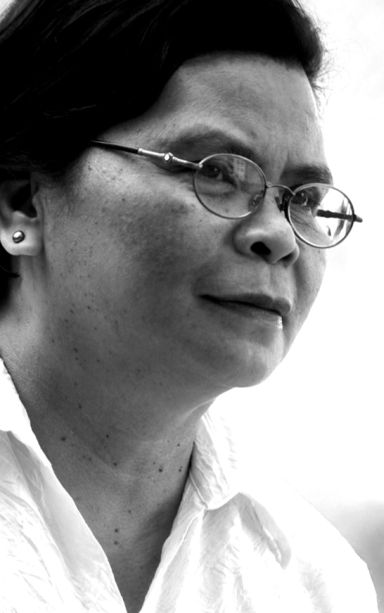
DELA CERNA
The Cultural Heritage Program of the Ramon Aboitiz Foundation Inc. (RAFI) takes the lead in the effort to revitalize the media coverage of heritage through a workshop on Heritage for Media on October 11, 2017 at the Casa Gorordo Museum.
Heritage was the top story in the local dailies and other media outlets from 2000 to 2013. Casa Gorordo Museum curator Florencio Moreño gave the rationale of the workshop: there is a decline in the number of heritage articles; the outlet facilities of heritage have been travel and tourism; there is no depth especially in the social media; hence, there is need to increase capitalizing of new event in covering heritage.
Moreño tackled two points of discussion: popular education and advocacy (conservation, etc.). For popular education, he shared three activities, namely: Making the “Un-important” Interesting, Making the Intangible Tangible, and Making the Important Interesting.
Three examples of making the “un-important” interesting are the puso (w/ circumflex on the o), the legendary utan Bisaya and the “Sikwate.” The puso is heart-shaped like the heart of the banana plant called puso, and it is the container for rice for easy mobility because the Bisayans are importers and seafarers.
To add to the information, puso was a ritual of object in precolonial times before it became a means of livelihood during the colonial period up to the present. Originally, it had eight forms and now only two have become popular.
The utan Bisaya is a conglomeration of different vegetable originating from various countries in the world except the buwad (referred to as the subak) which is from Bantayan, Cebu. Is the way of cooking utan the Bisaya way? This will take another forum.
“Sikwate” is the Cebuanized form of chocolate. Originating in Central America, the Filipinos pioneered its cultivation in Asia in 1600. Cebuano cacao was compared to Caracas and Colombian cacao during the Spanish period. “Espiso” from “espresso” is preferred as it is strong and unadulterated.
While sold en masse, Cebuanos have retained the traditional way of preparing chocolate similar to Central America.
The Intangible can be made Tangible through interesting stories, for everybody loves a good story.
There is a precaution though, that there are different conceptions of history, so different ways of expressing history.
For example, the Mayan calendar reflects the Mayan spiral form of history, the Chinese cyclical view of history is manifested through the dynasties, while the Filipinos need a real reminder of important things.
Making the Important Interesting is connecting the dots to form meanings.
The example given is that of the two statues of the Sto. Niño (signifying birth) and the Ecce Homo (signifying death), the two oldest Christian images found in one site (the Basilica) sum up the story of Christ. Jobers Bersales of CDN wrote the stories behind the trees of San Fernando in “A Century-old Reason for the 100-Year Old Trees.”
Three main sources are suggested to be able to write about heritage: the archives (actual and online), persons (through interviews), places and objects.
In between the discussion, Moreño gave a pop quiz to stimulate interest and the questions were interesting like: In which Cebuano town was the first Christian marriage in the Philippines held? (answer: Cordova); Name the two saints documented to have set foot in Cebu? (answer: Pope John Paul II and Mother Teresa); Of the 110 galleons in the Manila-Acapulco Galleon Trade, how many were built in Cebu? (Answer: 2); Rizal spoke Cebuano. True or false? (Answer: True).
Consciousness on cultural heritage and local history in Cebu actually started in 1990 at the University of the Philippines Cebu with the Committee on Local Studies headed by yours truly. It organized the First Cebu Cultural Week on September 23-28, 1991 with the theme: “Cebu’s Contributions to the National Culture.”
The weeklong activity focused on Cebu’s contributions in the field of art, literature, education, culture, science, sports, trade and commerce, food. I went on study leave from 1992 to 1997, and when I came back a proposal was produced for the establishment of the Central Visayas Studies Center (CVSC) which was approved by the UP Board of Regents in May 1999.
From 1999 to 2009, I was at the helm as director of the CVSC which initiated a series of Heritage Forum in selected towns in the Southern, Northern and Western Cebu.
These were followed up with a series of Local History Writing Workshops, tapping local residents as resource persons. Through partnership with RAFI Cultural Heritage Program and the Provincial Arts and Culture Committee, the CVSC conducted the Barangay History Conference in Argao for the SK and Barangay officials of Argao, Dalaguete, Alcoy, Boljoon, and Oslob.
This was in preparation for the series of cultural mapping of the barangays of these five towns which was done by the students of the Science, Technology, and Society (STS) classes of the University of the Philippines Cebu from 2007 to 2009.
Then the Town History Project of the Provincial Government was implemented with the partnership of RAFI and the University of San Carlos from 2008 to 2012 which produced the 55-volume set of the history of the municipalities and component cities of Cebu, the province of Cebu and the provincial Capitol of Cebu.